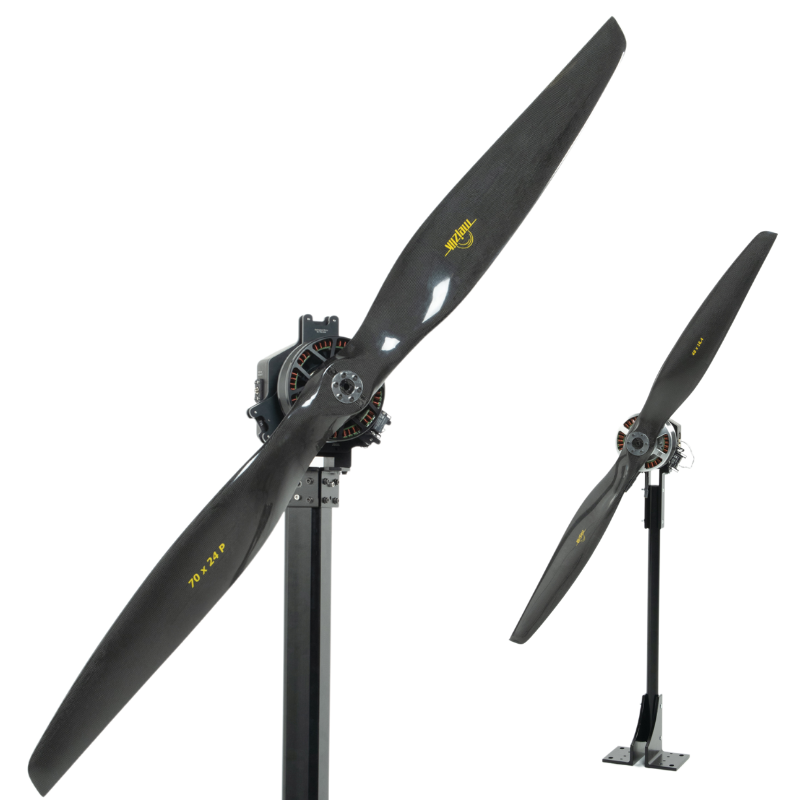By Lauren Nagel
Today's largest drones and eVTOL are capable of carrying thousands of pounds, in the form of humans, cargo and more. But how can we determine how much weight a drone can carry?
The amount of weight a drone can carry first and foremost depends on the amount of thrust produced by its propellers.
To say it in one sentence: the amount of weight a drone can carry is equal to the difference between the drone's total thrust and the thrust required for the drone to fly.
This number will differ based on the type of flight the drone is intended to complete, which we will get into below.
In this article we will cover:
- The Drone Thrust: Weight Ratio
- Thrust Requirements for Basic Operations
- How to Calculate How Much Weight a Drone Can Carry

Figure 1: A cargo-carrying drone
Drone Thrust to Weight Ratio
When a drone is hovering in place (in a no-wind condition), the thrust produced is equal to the weight of the drone:

So if the mass of the drone is 35 kg for example:

The drone’s propellers therefore need to produce 343 N or 35 kgf of thrust for the drone to hover. If we’re building a quadcopter with four propellers, that comes to 86 N or ~9 kg per propeller.
But it’s not that simple, because in most cases the drone will also need to take off and maneuver, which requires acceleration and greater thrust.
Click here to learn more about Static and Dynamic Methods for Balancing Drone Propellers
Thrust Required for Basic Operations
There is a basic rule that says that for most drones, if your propellers can generate twice as much thrust as is required to hover, you’ll have sufficient control for most operations. For stable control, you're aiming for a thrust : load ratio of 2:1. So if you’re building a drone for surveillance, videography or basic flying, this is a pretty simple rule to follow.
For our 35 kg drone, each propeller would therefore need to produce about 18 kgf of thrust for stable control.

Figure 2: IF1200 Heavy Lift Drone
How to Calculate How Much Weight a Drone Can Carry
Let’s say that we want our drone to carry a load in addition to its own weight. We just have to figure out how much extra mass we need to carry, then make sure that the propellers can produce enough thrust.
Let’s assume we want our 35 kg drone to carry a 5 kg load, so it will weigh 40 kg in total.
If we use the same formula as before:

We figure out that we need our quadcopter to produce 40 kgf of thrust to hover, or 80 kgf of thrust for stable control. Divided by four propellers, this is 20 kgf per propeller.
There are several methods we can use to confirm that our propellers can produce 20 kgf of thrust each, covered in this article on How to Calculate and Measure Propeller Thrust.
Conclusion
In conclusion, the amount of weight a drone can carry depends on a few factors, but most importantly the amount of thrust generated by its propellers.
There are several ways to estimate whether your propellers can produce enough thrust, but the only way to be sure is with proper testing.
If you’d like to learn more about drones, propulsion systems, and how to improve performance, we encourage you to check out our collection of articles.



 Back to Blog
Back to Blog


Atef
February 03, 2025
מחיר